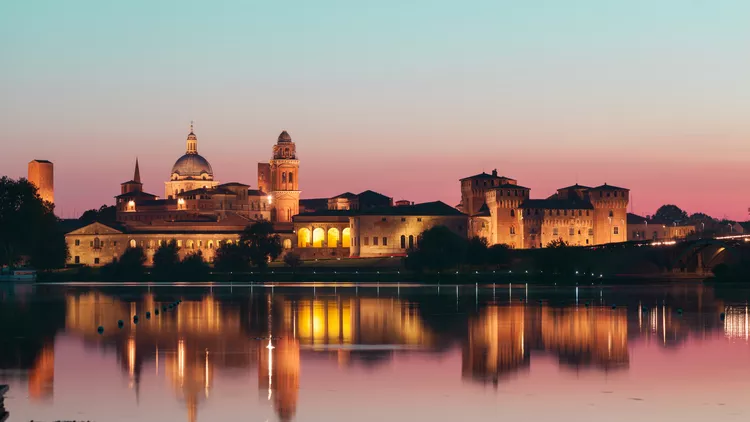Mantua, or Mantova, is a beautiful, historic city in northern Italy surrounded on three sides by lakes. It was one of the greatest Renaissance Courts in Europe and home to the wealthy Gonzaga family. The town’s center consists of three spacious and lively squares that join together. In 2008, Mantova became a World Heritage Site, recognized for its Renaissance planning and architecture and is part of the UNESCO Quadrilateral, a district of historic cities in northeastern Italy.
Location
Mantua is situated between Bologna and Parma in the Northern Italian region of Lombardy, not far from the Po River. The city sits at an altitude of 19 meters, covering an area of 63 square kilometers. By car, it is conveniently located near the A22 autostrada.
Tourist Office
The tourist office in Mantua is conveniently located near the church of Sant’Andrea in Piazza Mantegna 6, one of the three central piazzas.
Train and Bus Stations
The train station is located in Piazza Don Leoni at the end of Via Solferino e S. Martino, towards the southwest of the town. It’s just about a 10-minute walk from the station to the heart of Mantua. Additionally, the bus station can be found in Piazzale A Mondadori, situated near the train station.
Food Specialties
Mantua is known for its unique culinary specialties, particularly the dish of pike in green sauce, known as luccio in salsa. Another notable dish is tortelli di zucca, a type of pasta filled with pumpkin or squash, ground amaretti cookies, and mostarda. Furthermore, as Mantua is located in a rice-growing region, visitors can also enjoy some exquisite risotto dishes.
Attractions
Explore the captivating attractions of Mantua:
- Palazzo Ducale, the residence of the Gonzaga family from the late 13th to early 17th centuries, is an extensive complex featuring numerous buildings, courtyards, and gardens. With over 500 rooms, the most famous is the Camera degli Sposi, featuring stunning frescoes from 1474 painted by Mantegna. The Palazzo is closed on Mondays and reservations are recommended.
- Palazzo Te, another magnificent Gonzaga palace created by Giulio Romano, showcases beautiful frescoes, including several erotic frescoes.
- The Duomo, or Cathedral of San Pietro, was also decorated by Giulio Romana in 1545.
- The Basilica di Sant’Andrea contains the tomb of the painter Andrea Mantegna, along with a much-disputed relic said to hold the blood of Christ.
- The Rotonda of San Lorenzo, a circular 11th-century structure, is believed to be on the site of a Roman temple dedicated to Venus.
- Squares—Enjoy some relaxation in the picturesque Piazza delle Erbe and Piazza Sordello, which form the heart of Mantua, lined with charming cafes and excellent restaurants.
- Near Mantua: The town of Grazie boasts one of the most unique churches you may encounter. Located by the water, Grazie features a dock with tourist boat excursions available during the summer and weekends in late spring.





